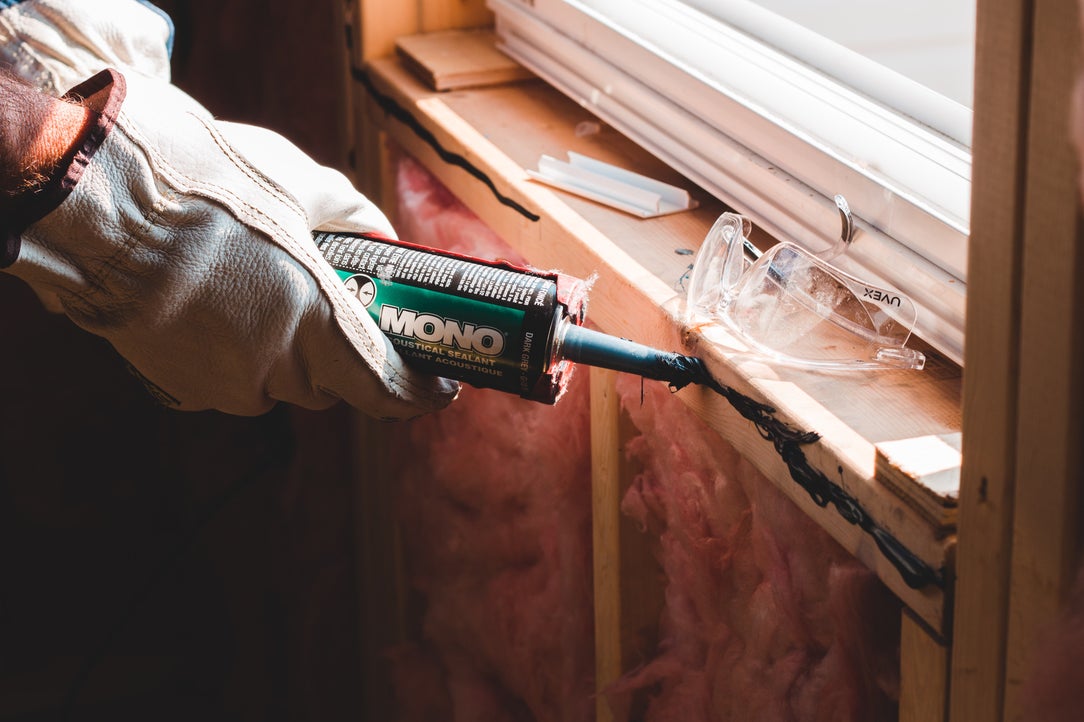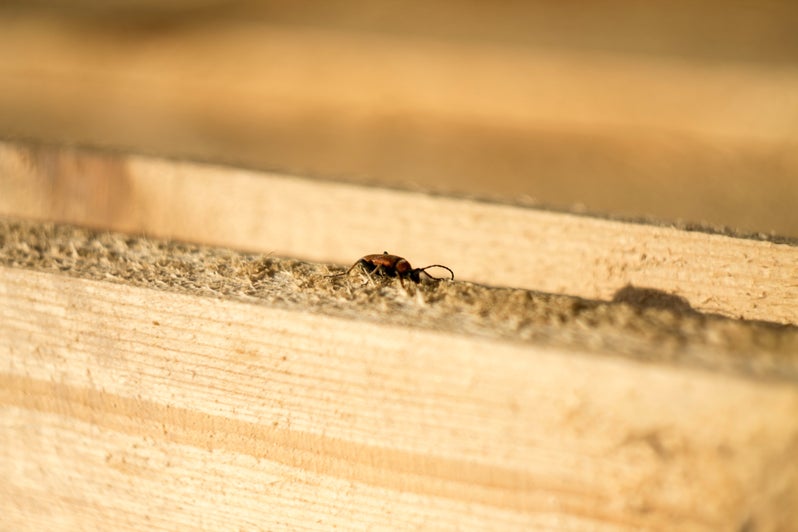If you are anything like me, I make plans in the spring for any home repair jobs that need to be taken care of. My favorites are the aesthetic ones; paint, new light fixtures, maybe new hardware on the cabinets, new carpeting or window treatments. Things that brighten up the place and I can easily see and enjoy.
However there are the less that enjoyable home renovations, or upkeep that every home owner should be aware of and give their full attention. Not as satisfying, but definitely in your best interest.
DAD KNOWS BEST
My dad always told me you have to look after your “head” and your “feet” first. Take care of these things and the rest can wait. The “head” in this case, is your roof, and your “feet” is your foundation. And if water is involved in either of these?
# 1: THE HEAD
So let’s start with your roof. Inspect regularly for damage by the elements. Loose or lifting shingles? Gutters need cleaning? Do you get ice dams or build up in the winter? If you suspect a leak on your roof, you can check in your attic for water damage or mould around the rafters and roof sheathing. Leaks can also be identified by going onto the roof itself, but if repairs are needed? You should call in a roofing or in some cases a plumbing professional.
Remember even minor leaks can have devastating effects over time.

The longer the leak lasts, the more likely structural damage and mould can occur, negatively affecting the health and resale value of your home.
# 2 THE FEET
In Canada, our winters are pretty unpredictable, and we can experience extreme freeze thaw cycles. Small hairline fractures may occur in the concrete foundation. These small cracks are common, but here’s what to look for:
• bulging or buckling in the concrete
• cracks wider than about the width of a pencil.
These can be signs of more significant problems which require repairs to your foundation.
However, if you notice cracks and are unsure how serious they may be here is a tip from Paul Rodriguez of Intelligent Contracting Solutions, “Take a marker and make two lines across from each other, on opposite sides of the crack. Measure between the two lines, record the measurements. Come back in three weeks and measure again. If the gap has increased, call a structural engineer for an assessment. Settlement in new construction can happen, but drastic changes can mean something is wrong with the foundation such as footings or drainage.”
If the gap hasn’t widened, there’s no need to address them unless you want to for aesthetic reasons. Just keep an eye on them and make sure they don’t grow. Without being addressed, these larger cracks can grow, allowing water and salt to enter the concrete and further erode the steel rebar within the foundation of your home. When this rebar erodes, it threatens the durability of your home and can lead to potential rotting and damage to the internal structure of your home.
Other signs to look out for that signify your home’s foundation is shifting include cracks in the paint inside your home, difficulty opening and closing your doors and windows, or uneven flooring. Though these issues may be harmless—door frames can shift due to humidity in the summer—they may also be signs that joists have rotted or are broken, requiring a replacement. If you’re unsure, it’s always best to get professional advice.
Foundation issues can significantly affect the resale value of your home as a new owner would have to pay for repairs. Home inspectors inspect the foundation, and if a home inspection is included as a condition of your home’s sale, it could mean the deal won’t go through.
NOW ALLLLLL THE INBETWEEN PARTS
#3 PESTS
Pests and rodents can cause significant damage to your home, termites being one of the most destructive. Aside from the very unpleasant idea of having critters running around your home, rodents can cause damage you may not see right away.
Rodents can destroy insulation, chew through wiring, and even chew Pex pipes for water. Bedding and droppings can carry disease, It’s important to Inspect your home yearly for gaps around soffit and fascia, shingles or missing roofing materials.
When it comes to insects, they can cause structural damage to your drywall and baseboards. In the South Okanagan, the sandy soil, pine tree sap, and dry weather means are ants. There are many types of ants, and the “boax and water” solution does not work for many of them.
Signs to look out for include “termite tunnels,” which are small black or brown stick-looking tunnels made from wood, soil, and termite saliva. Small piles of shed wings, a significant amount of dead insects, mouse waste, chewed wires, or ripped-up paper, cardboard, or fabric are also indicators that you have a pest problem.
It’s important to get an exterminator in your home and identify how these pests are getting in to prevent future problems. The longer you leave these insects and rodents alone, the more time they will have to breed and cause even more damage.
Prevention is essential, including sealing up any cracks or holes around the house with caulking; ensuring food is stored properly in air-tight containers; regularly checking for signs of pests, such as droppings or nests; and keeping your home clean and free of clutter.
#4 ELECTRICAL ISSUES:
Faulty lighting, flickering lights, or a breaker always tripping can be a red flag. Worst case scenario, house fire, on the other end of the spectrum it could damage your appliances This is a priority situation, don’t wait.
Plugs and switches can get worn out, and electrical lines can get crimped or frayed. You can bet these things may show up in a home inspection and will effect your home’s resale value.
This is also a situation where you want a licensed contractor, ensure you have permits and inspections completed. Your safety and your family’s safety is on the line with this one.
If you ignore little problems, they become big. Don’t write off these signs of potential problems that can cost you more in the future.
We want you to enjoy your home, and for most of us, our biggest investment.
*Inspiration and quotes from Paul Rodriguez of Intelligent Contracting Solutions taken from an article by Alicia Hearns on Realtor.ca

However there are the less that enjoyable home renovations, or upkeep that every home owner should be aware of and give their full attention. Not as satisfying, but definitely in your best interest.
DAD KNOWS BEST
My dad always told me you have to look after your “head” and your “feet” first. Take care of these things and the rest can wait. The “head” in this case, is your roof, and your “feet” is your foundation. And if water is involved in either of these?
You need to get on that as soon as possible. Signs of water via warped walls, stained ceilings or damp basements are major red flags. Also any leaks can lead to mould, and this can be very toxic for your family.
# 1: THE HEAD
So let’s start with your roof. Inspect regularly for damage by the elements. Loose or lifting shingles? Gutters need cleaning? Do you get ice dams or build up in the winter? If you suspect a leak on your roof, you can check in your attic for water damage or mould around the rafters and roof sheathing. Leaks can also be identified by going onto the roof itself, but if repairs are needed? You should call in a roofing or in some cases a plumbing professional.
Remember even minor leaks can have devastating effects over time.

The longer the leak lasts, the more likely structural damage and mould can occur, negatively affecting the health and resale value of your home.
# 2 THE FEET
In Canada, our winters are pretty unpredictable, and we can experience extreme freeze thaw cycles. Small hairline fractures may occur in the concrete foundation. These small cracks are common, but here’s what to look for:
• bulging or buckling in the concrete
• cracks wider than about the width of a pencil.
These can be signs of more significant problems which require repairs to your foundation.
However, if you notice cracks and are unsure how serious they may be here is a tip from Paul Rodriguez of Intelligent Contracting Solutions, “Take a marker and make two lines across from each other, on opposite sides of the crack. Measure between the two lines, record the measurements. Come back in three weeks and measure again. If the gap has increased, call a structural engineer for an assessment. Settlement in new construction can happen, but drastic changes can mean something is wrong with the foundation such as footings or drainage.”
If the gap hasn’t widened, there’s no need to address them unless you want to for aesthetic reasons. Just keep an eye on them and make sure they don’t grow. Without being addressed, these larger cracks can grow, allowing water and salt to enter the concrete and further erode the steel rebar within the foundation of your home. When this rebar erodes, it threatens the durability of your home and can lead to potential rotting and damage to the internal structure of your home.
Other signs to look out for that signify your home’s foundation is shifting include cracks in the paint inside your home, difficulty opening and closing your doors and windows, or uneven flooring. Though these issues may be harmless—door frames can shift due to humidity in the summer—they may also be signs that joists have rotted or are broken, requiring a replacement. If you’re unsure, it’s always best to get professional advice.
Foundation issues can significantly affect the resale value of your home as a new owner would have to pay for repairs. Home inspectors inspect the foundation, and if a home inspection is included as a condition of your home’s sale, it could mean the deal won’t go through.
NOW ALLLLLL THE INBETWEEN PARTS
#3 PESTS
Pests and rodents can cause significant damage to your home, termites being one of the most destructive. Aside from the very unpleasant idea of having critters running around your home, rodents can cause damage you may not see right away.
Rodents can destroy insulation, chew through wiring, and even chew Pex pipes for water. Bedding and droppings can carry disease, It’s important to Inspect your home yearly for gaps around soffit and fascia, shingles or missing roofing materials.
When it comes to insects, they can cause structural damage to your drywall and baseboards. In the South Okanagan, the sandy soil, pine tree sap, and dry weather means are ants. There are many types of ants, and the “boax and water” solution does not work for many of them.

Signs to look out for include “termite tunnels,” which are small black or brown stick-looking tunnels made from wood, soil, and termite saliva. Small piles of shed wings, a significant amount of dead insects, mouse waste, chewed wires, or ripped-up paper, cardboard, or fabric are also indicators that you have a pest problem.
It’s important to get an exterminator in your home and identify how these pests are getting in to prevent future problems. The longer you leave these insects and rodents alone, the more time they will have to breed and cause even more damage.
Prevention is essential, including sealing up any cracks or holes around the house with caulking; ensuring food is stored properly in air-tight containers; regularly checking for signs of pests, such as droppings or nests; and keeping your home clean and free of clutter.
#4 ELECTRICAL ISSUES:
Faulty lighting, flickering lights, or a breaker always tripping can be a red flag. Worst case scenario, house fire, on the other end of the spectrum it could damage your appliances This is a priority situation, don’t wait.
Plugs and switches can get worn out, and electrical lines can get crimped or frayed. You can bet these things may show up in a home inspection and will effect your home’s resale value.
This is also a situation where you want a licensed contractor, ensure you have permits and inspections completed. Your safety and your family’s safety is on the line with this one.
If you ignore little problems, they become big. Don’t write off these signs of potential problems that can cost you more in the future.
We want you to enjoy your home, and for most of us, our biggest investment.
Enjoy!

*Inspiration and quotes from Paul Rodriguez of Intelligent Contracting Solutions taken from an article by Alicia Hearns on Realtor.ca
